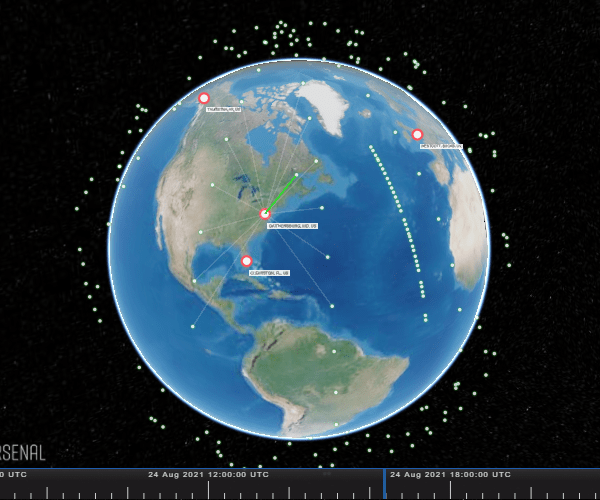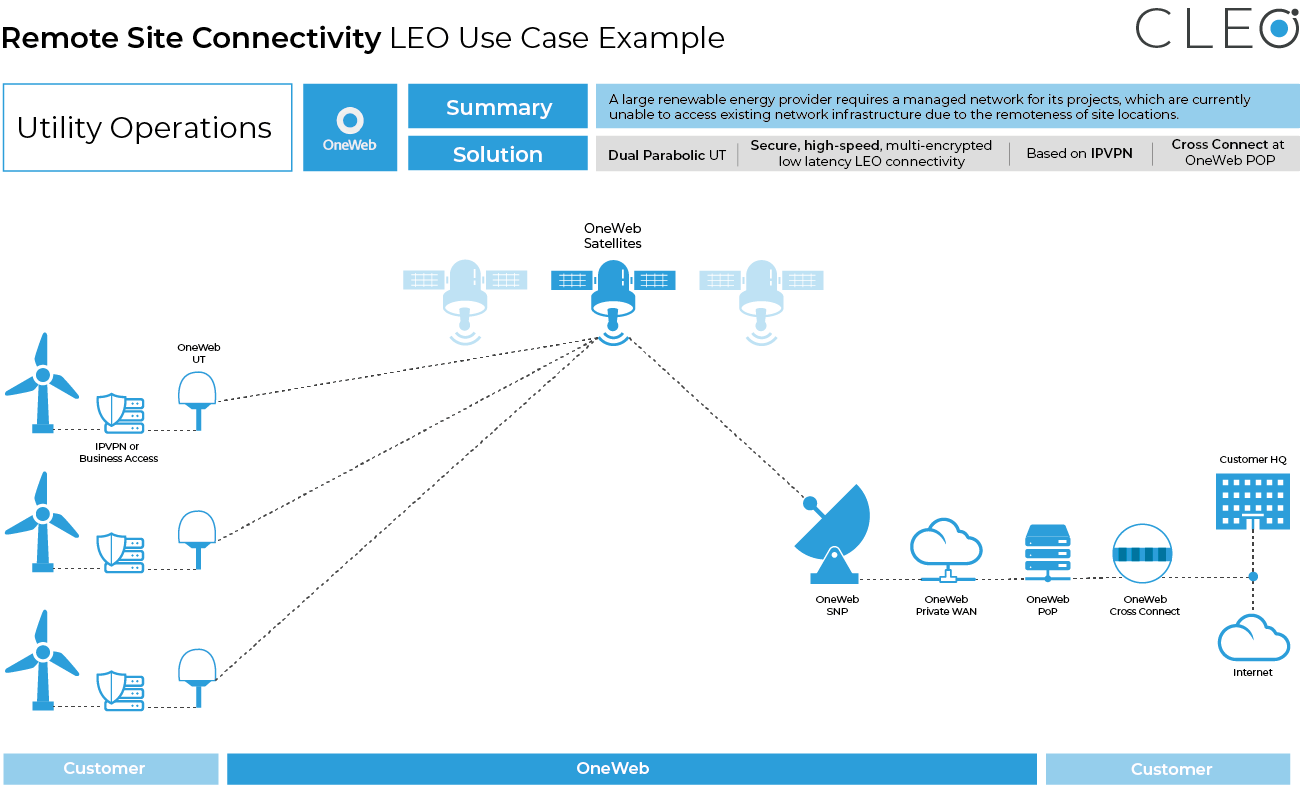Technology
Overview
By working with Clarus, we can support your organisation in making OneWeb part of your solution to integrate, manage, and scale your network. With a constellation of 648 Low Earth Orbit (LEO) satellites, OneWeb’s primary aim is to remove the barriers of connectivity and provide high-speed internet for anyone, anywhere. OneWeb’s satellites, combined with its ground-based global gateway stations and user terminals, will provide affordable, robust communications services, connected to our IoT future, and create a route to 5G everywhere.
The OneWeb Network

Constellation Design
The OneWeb constellation comprises of 648 satellites –
588 active satellites equally divided among 12 planes, operate at an altitude of 1200km above the Earth’s surface. The remainder are spare satellites flying between active satellites with their payloads powered off, ensuring robust constellation-level reliability.
Each plane is separated in altitude by 4km to prevent inter-plane collision. Each plane is spaced at 15.225°, except between the planes at the “seam” (where a North-bound plane meets a South-bound one), which is 12.525°.
Each satellite has 16 user beams, arranged in a “Venetian blind” pattern. The “footprint” of each satellite overlaps slightly with adjacent satellite footprints to create gapless coverage. Each beam contains a single forward link carrier with 250MHz of occupied bandwidth. Each beam contains six reverse link carriers of 20MHz each, and 125MHz of total occupied bandwidth. Each beam delivers ~480Mbps (400Mbps DL 80Mbps UL
Frequency
Under ITU regulations, OneWeb has secured priority rights to operate the Ku- and Ka-band spectrum. This brings over 6 GHz of spectrum into use, enabling global, high-speed connectivity for the unconnected 4 billion.
Feeder links are Ka-band using both Right-Hand and Left-Hand Polarization. User links are Ku-band using only RHCP for downlink (FWD) and LHCP for uplink (RTN). Forward link bandwidth is segmented into 250MHz channels, and Return Link bandwidth is segmented into 125MHz channels.
FWD User Beams are assigned downlink frequencies using 8-color reuse; each frequency is used twice among 16 beams. RTN User Beams are assigned uplink frequencies using 4-color reuse; each frequency is used four times among 16 beams. This ensures efficient use of bandwidth while avoiding inter-beam interference.


Ground Network
In addition to its constellation of satellites, OneWeb has unrivaled infrastructure on the ground. Ground stations are linked to satellites passing overhead in the Ka- band frequency.
Currently, five ground stations are fully operational across Europe and the USA, supporting services in Europe, Alaska, Canada, Greenland, Iceland, and the Arctic seas, with global coverage planned to be completed by 2024.
User Terminals
OneWeb has developed a new class of LEO User Terminal (UT) to connect everyone to the internet no matter where they are.
OneWeb’s first LEO-only dual parabolic antennas integrates complex satellite communications technology into a simple UT design to meet specific needs for many different sectors including Energy, Maritime, Enterprise, and Governments with mission critical applications.
12 db/K enables highly efficient connectivity services, with high throughput performance of up to 195Mbps download / 32Mbps upload and less than 70ms latency.
Integrations
Wireless connectivity for everyone, everywhere.
OneWeb can extend an existing core network to hard-to-reach locations, making internet accessible and affordable in remote, rural areas that are currently underserved. This backhaul increases the capacity, availability, and performance of existing solutions, supporting the expansion of fibre-like internet and mobile connectivity for users globally. OneWeb can provide primary or backup connectivity, ensuring unrivalled business continuity.
Applications:

